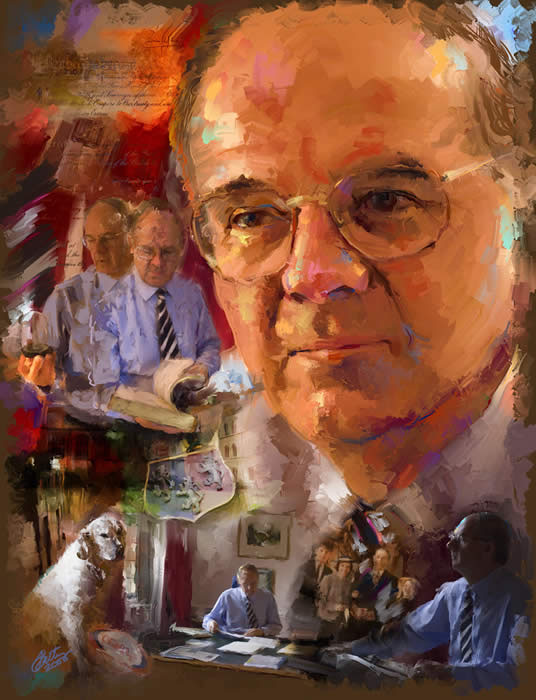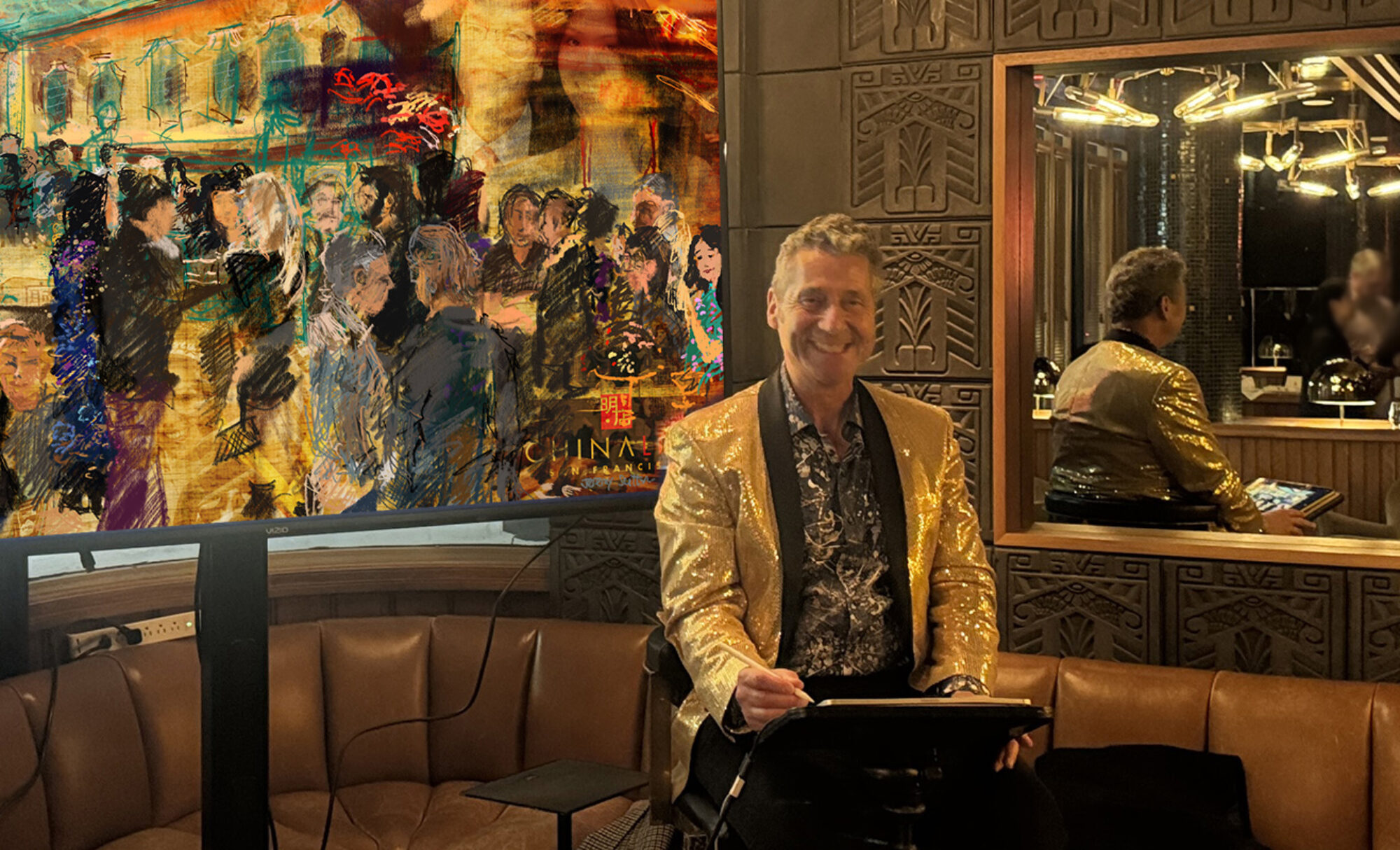
John Church
Mixed media on canvas, 22″ x 30″, 2018
- The Story: Key Goals, Emotions and Message
The start of the process is listening to the client about the story behind the portrait. We discuss why it is being created and what are the most important aspects of the subject that need to be communicated. Are there any time constraints or deadlines that need to be met? - Scale and Size: Setting the Physical Parameters
We then discuss where the portrait will be displayed and how large it should be. Is it preferred to be landscape or portrait format or square or almost square. Are there any other physical boundary conditions such as aspect ratio (width/height)? - Collecting Source Material: Research, Hierarchy and Significance
Once we have the story and size established, the process of acquiring source material for possible inclusion in the portrait begins. Source material can include significant hand-written documents, sketches, awards, textures, maps, logos, family photos, pet photos, portrait photos of the subject from different eras and ages, and so on. An important aspect of this stage is discussing with the client what is the relative significance and hierarchy of different visual elements and materials, and which are “must includes” versus “maybe includes”. - Image Creation: From Drafts to Final Approval
Once the source material is collected and the relative significance understood, then the image creation, composition and construction process begins in earnest. This portion of the process is done digitally using Corel Painter and other digital art media and tools. As the portrait develops I share drafts with the client to keep them onboard with progress and allow them the opportunity to give feedback and make suggestions. A complex and sensitive process like this is a collaborative creative process. We reach a stage where the artwork feels complete and the client gives approval of the final state of the digital image.
- Framing, Delivery & Hanging: Unveiling and Completion
That approval leads to the final production stage of the process in which the digital image is printed onto canvas, some mixed media and acrylic gels and paint may be added, and the stretching, mounting and framing takes place. Framing is done with approval of the client for the frame choice. The artwork is then packed and shipped (or delivered by hand). Where possible I will attend any unveiling, if invited, and be happy to share words about the process etc.

John Church with the Master of Pembroke College, Dame Lynne Brindley, and the portrait when it was presented to him at a special lecture and dinner on March 15th, 2018.
 John taking a close look at the painting
John taking a close look at the painting


Giles Henderson
Pigment ink and acrylic on canvas, 30″ x 40″, 2006
This collage portrait is of the former master of Pembroke College, Mr Giles Henderson CBE, BCL, MA. It was presented to the Pembroke College Art Collection on June 23, 2006, and now hangs in the Henderson Building in the new section of Pembroke College on Brewer Street.

Stacy
Pigment ink on canvas, 12″ x 17″, 2020
Here is another example of a collage portrait, this one a memorial portrait.
